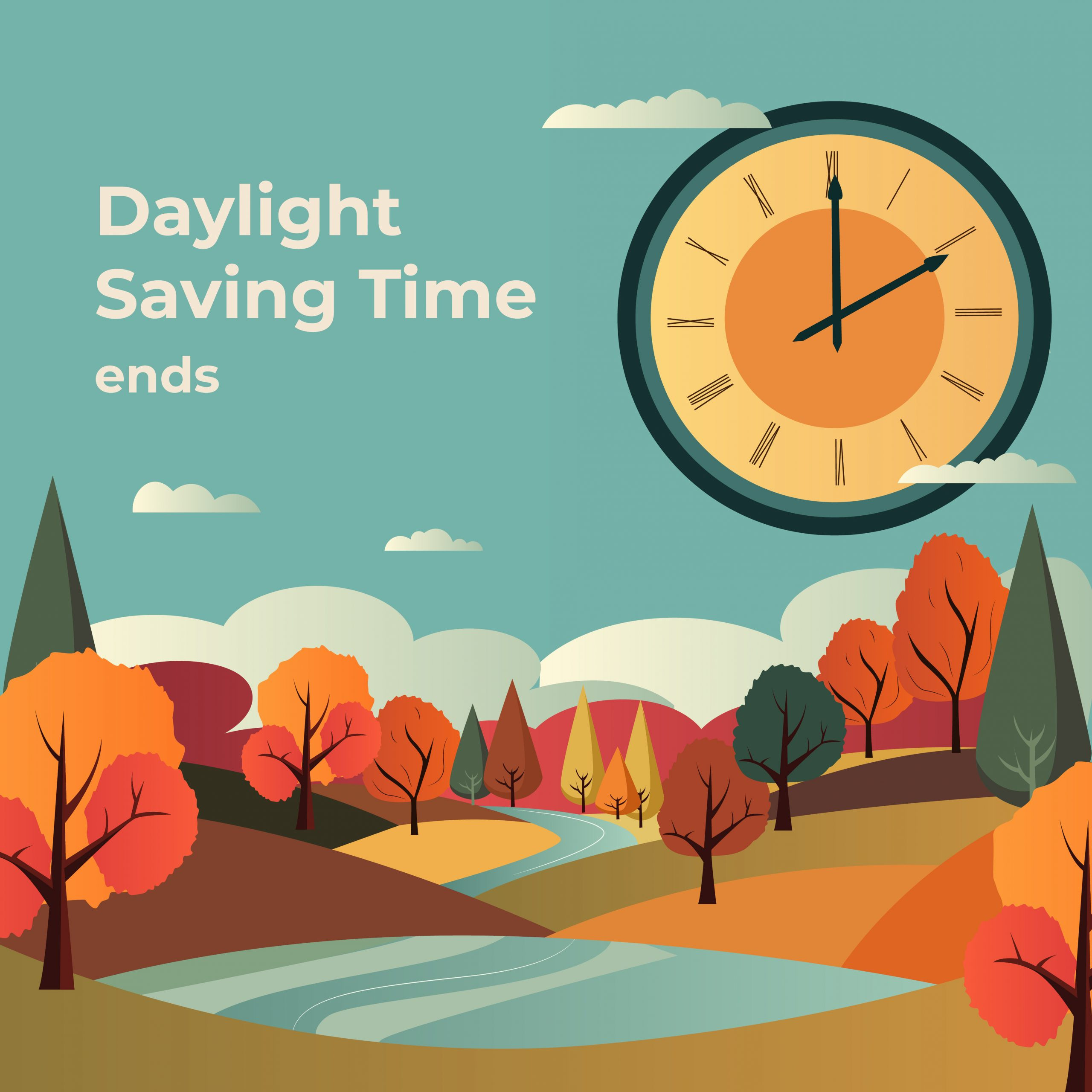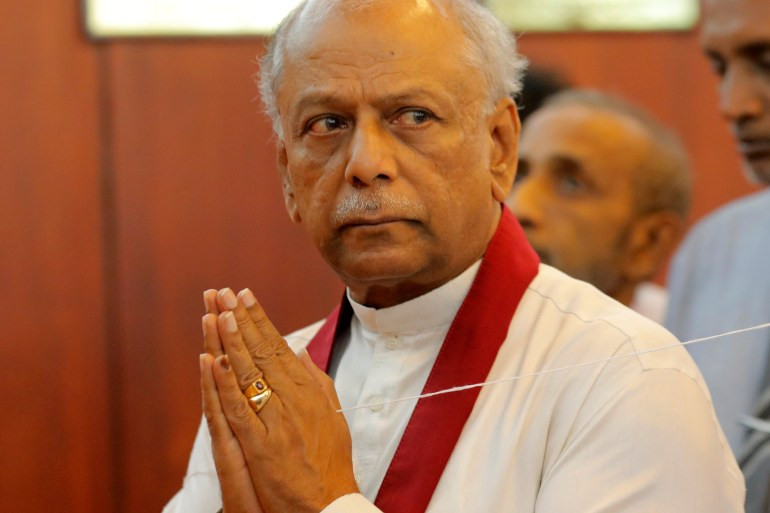Daylight saving time will soon be coming to a close, and while the onset of daylight saving time in the spring is linked to more negative health consequences — like a higher risk of obesity, metabolic syndrome, cardiovascular disease and depression — the clocks “falling back” in November also brings some adverse health outcomes. Here’s your guide to the end of daylight saving time — and how to cope with the time change.
When does daylight saving time start and end?
Daylight saving time ends at 2 a.m. local time on Sunday, Nov. 3, when we "fall back" and gain an extra hour of sleep. We’ll get an extra hour of daylight in the mornings but lose an hour of daylight in the evenings.
Daylight saving time will begin again next year on Sunday, March 9, 2025, when we “spring forward” and lose an hour of sleep. We’ll gain an extra hour of light in the evenings but have darker mornings.
A brief history of daylight saving time
Daylight saving time was introduced in the United States in 1918 as a way to conserve energy during World War I. However, studies have shown that it isn’t actually saving much energy.
Some have credited Founding Father Benjamin Franklin with originating the idea of a seasonal time change after he proposed regulating time in a satirical essay, but Philadelphia's Franklin Institute has disputed this. Contrary to popular belief, farmers didn’t advocate for daylight saving time, either; in fact, agricultural groups called for a repeal of daylight saving time in 1919, saying that the biannual changes were disruptive to their workday.
The Uniform Time Act of 1966 got most of the country on the same page by mandating national start and end dates to daylight saving time, though states were still allowed to opt out.
Who doesn’t participate in daylight saving time?
These U.S. states and territories have chosen not to switch their clocks twice a year:
- Hawaii
- Arizona (except for the Navajo Nation, which does observe daylight saving time)
- American Samoa
- Guam
- Northern Mariana Islands
- Puerto Rico
- U.S. Virgin Islands
How the end of daylight saving time affects your health
The shift back to standard time in November can feel easier than adjusting to daylight saving time in March. After all, we’re gaining an extra hour of sleep, right? But experts say there are still negative consequences for our health.
Sleep patterns are disrupted
Stroke risk goes up
A 2016 Finnish study found that moving the clock back or ahead one hour temporarily increases the risk of ischemic stroke — the most common type of stroke caused by a clot blocking blood flow to the brain — likely thanks to the disruption in circadian rhythm (aka our body’s internal clock).
Depression increases
A 2016 Danish study found that depression diagnoses increase “immediately after” standard time begins in the fall. Some of that may have to do with the onset of seasonal affective disorder (SAD), which affects about 5% of the U.S. population and is triggered by shorter, darker, colder days.
Car accidents increase
A spokeswoman for AAA's Auto Club Group told the Associated Press that earlier sunsets in the afternoon mean darker driving conditions in the evening and higher instances of accidents on the road.
How to prepare for the time change
Here are some experts' tips on making the fall time change more bearable.
Gradually adjust your sleep and wake times
Natalie D. Dautovich, an assistant professor at Virginia Commonwealth University and an environmental scholar at the National Sleep Foundation, told Yahoo Life that she suggests gradually pushing back the times you go to bed and wake up by 15 minutes in the days leading up to daylight saving time ending — so that it isn’t as much of a shock to your system when the clocks change by one hour.
Establish a good bedtime routine
Having an established bedtime routine can help signal to your body that it’s time to wind down and make it easier to adjust to time changes. Judy Ho, a licensed clinical and forensic neuropsychologist, told Yahoo Life you should have a calming evening routine that involves putting away all electronic devices, especially blue-light devices. Harris also suggests avoiding any hard exercise, heavy meals, caffeine or alcohol right before bed.
Get plenty of sunlight during the day — and first thing in the morning
At night and before it’s time to wake up, keep your room dark with the curtains closed to help you stay asleep an hour longer. Then, when it’s time to get up, get plenty of sunlight. Jamie Zeitzer, a Stanford University professor of psychiatry and behavioral sciences, told Yahoo Life to expose yourself to bright light as soon as possible. “Going out early in the morning, getting that good dose of light — that’ll help you shift faster into the new time,” Zeitzer says. Getting a healthy helping of sunlight each day could stave off depression as well — reducing your risk by up to 20%, according to one study. If natural sunlight isn’t an option, try light therapy or a sun lamp, which can improve mood and sleep quality at night.
Stick to your new sleep and wake times
Once the clocks have changed, be consistent and stick to your new wake-up and bedtime routines, and try to avoid taking naps during the day.
What to Expect When the Clocks Fall Back
This year, clocks will “fall back” to standard time on Sunday, Nov. 3.
It’s that time of year again when Americans around the country (with the exceptions of Arizona and Hawaii) get an extra hour of sleep when they set their clocks back to standard time. At 2 a.m. on Sunday, Nov. 3, the clocks will “fall back” to 1 a.m. Yes, you gain that hour, but for many, the downside is that it’s already starting to get dark by the time you leave work.
The History of Daylight Saving Time
There’s a common myth that daylight saving somehow benefits farmers. That’s not the case.
The true origins of daylight saving time began in World Wars I and II as a way to conserve energy, according to the American Farm Bureau. The thinking was that if there were an extra hour of sunlight in the evening, Americans would use less energy.
Switching between standard and daylight saving time became permanent in 1966 with the Uniform Time Act, with states having the option to drop out. Arizona and Hawaii are the only ones on standard time year-round.
Farmers and Daylight Saving Time
“As far as taking care of the cows and that kind of thing, it doesn’t really change too much,” he said. “The cows are used to a routine similar to us. So it takes us a day or two to get that adjustment made and back to reality again, and the cows are kind of the same way.”
The Medical Perspective on Daylight Saving Time
“The reason why is that more sunlight in the morning time helps reinforce waking up, and having less light in the evening is less stimulation,” he said. “So when we’re winding down, preparing for sleep, having fewer hours of sunlight in the evening can help promote that process of falling asleep.”
The Ongoing Debate on Daylight Saving Time
Akingbola acknowledges it can be sad to walk out of work or school when it’s already dark out, but in the long run, standard time is the way to go.
Despite the medical advice, there have been calls in recent years to make daylight saving time permanent.
Sen. Mary Kiffmeyer, R-Big Lake, tried to pass a bill as recently as 2021 to make daylight saving time permanent, but it did not pass the Legislature.
The U.S. tried once before. According to Minnesota Star Tribune archives, due to an energy crisis, President Richard Nixon passed a law in January 1974 that made daylight saving year-round.
A month into it, the Minneapolis Tribune ran an article saying there were calls to reverse the decision because there were more accidents in the pre-dawn darkness, particularly involving school children waiting for the bus. Under daylight saving time in January, sunrise wasn’t until well after 8 a.m. in Minnesota.
Permanent daylight saving time was so unpopular that Congress decided to reverse its decision later that year, and we’ve been switching between standard and daylight saving time ever since.
Daylight Saving Time in New Jersey
The amount of daylight continues to diminish each day until Dec. 21, when the winter solstice arrives at 4:19 a.m., marking the official start of winter. The length of days will then begin to increase until the summer solstice on June 20, 2025.
The flip side is that the sun will rise approximately one hour earlier each morning after we return to standard time in early November.
On Nov. 2, sunrise in New Jersey is at approximately 7:29 a.m. and sunset is at about 5:53 p.m. The next day the sun comes up at 6:30 a.m. but sets at 4:52 p.m.
Key Dates to Remember
Clocks officially “fall back” at 2 a.m. on the first Sunday in November to 1 a.m.
Daylight Saving Time started on Sunday, March 10, 2024, and will end on Sunday, Nov. 3, 2024 — a run of 238 days. It has lasted from the second Sunday in March until the first Sunday in November since 2007.
We next turn the clocks ahead on March 9, 2025 — 126 days after turning them back. Daylight Saving Time in 2025 will end on Nov. 2, 2025.
The History of Daylight Saving Time
The concept dates back more than a century when English architect William Willett proposed the idea to change the clocks in 1907 in “The Waste of Daylight.” The suggestion of using daylight more efficiently can be traced to Benjamin Franklin.
While visiting in Paris in 1784, he wrote a letter to the editors of the “Journal of Paris” calling for a tax on every Parisian whose windows were shuttered after sunrise to “encourage the economy of using sunshine instead of candles,” according to Michael Downing, author of “Spring Forward: The Annual Madness of Daylight Saving Time.”
Daylight Saving became widespread in the U.S. when the Uniform Time Act of 1966 was passed. Back then, Daylight Saving ran from the last Sunday in April to the last Sunday in October and states were allowed to opt out.
In 1986, Daylight Saving was changed to run from the first Sunday in April until the final Sunday in October. The most recent revision took effect in 2006 when Energy Policy Act of 2005 revised Daylight Saving from the second Sunday in March until the first Sunday in November.
Who Doesn’t Participate?
Hawaii and most of Arizona do not observe Daylight Saving Time. The time change is also not observed in U.S. territories of Puerto Rico, Guam, American Samoa and the U.S. Virgin Islands. All of Indiana didn’t begin observing Daylight Saving until 2006.
The Future of Daylight Saving Time
Eighteen states have enacted legislation to make Daylight Saving Time permanent. Voters in California have voted to authorize year-round Daylight Saving Time. Those changes, however, require federal approval.
In March 2022, the U.S. Senate passed the Sunshine Protection Act, which would end changing the clocks twice a year. The U.S. House of Representatives didn’t take a vote on it, though.
A handful of provinces in Canada — most of Saskatchewan and Yukon — have adopted permanent daylight saving as have parts of British Columbia and two communities in northwest Ontario.
Daylight Saving Time Around the World
About 70 countries observe Daylight Saving Time. Most of North America, Europe and parts of South America and New Zealand adhere to it, while China, Japan, India and most other countries do not.
It starts on different dates elsewhere. In Europe, for example, Daylight Saving Time starts the last Sunday in March and ends the final Sunday in October.
The Unofficial Soundtrack
Fall is officially here, and it's almost time to turn back your clocks (and mentally prepare yourself for the darkness to arrive in the afternoon.) So get ready to bust out Cher's If I Could Turn Back Time, the unofficial soundtrack to the annual ritual of daylight saving time coming to an end.
The Importance of Sleep
The “fall back” time change is usually seen as the good one because it seems like you're getting an extra hour of sleep. That only works if you're able to ignore your usual wake-up time and sleep in on Sunday.
Check out these tips for combating fatigue after a time change. Building good sleep habits shouldn't be reserved for time changes. Work on having a healthy sleep routine year-round and those pesky clock switches won't drag you down so much. Unless Congress gets into gear, we're stuck with spring forward and fall back for the foreseeable future.
When Will Daylight Saving Time Return?
Already sick of the early darkness? The long nights peak pretty soon, on Dec. 21, during the winter solstice. After that, it'll start getting gradually lighter each afternoon until daylight saving time finally comes back to the US on March 9, 2025.
Daylight saving returns to the UK on March 30 and ends for Australia on April 6.


















